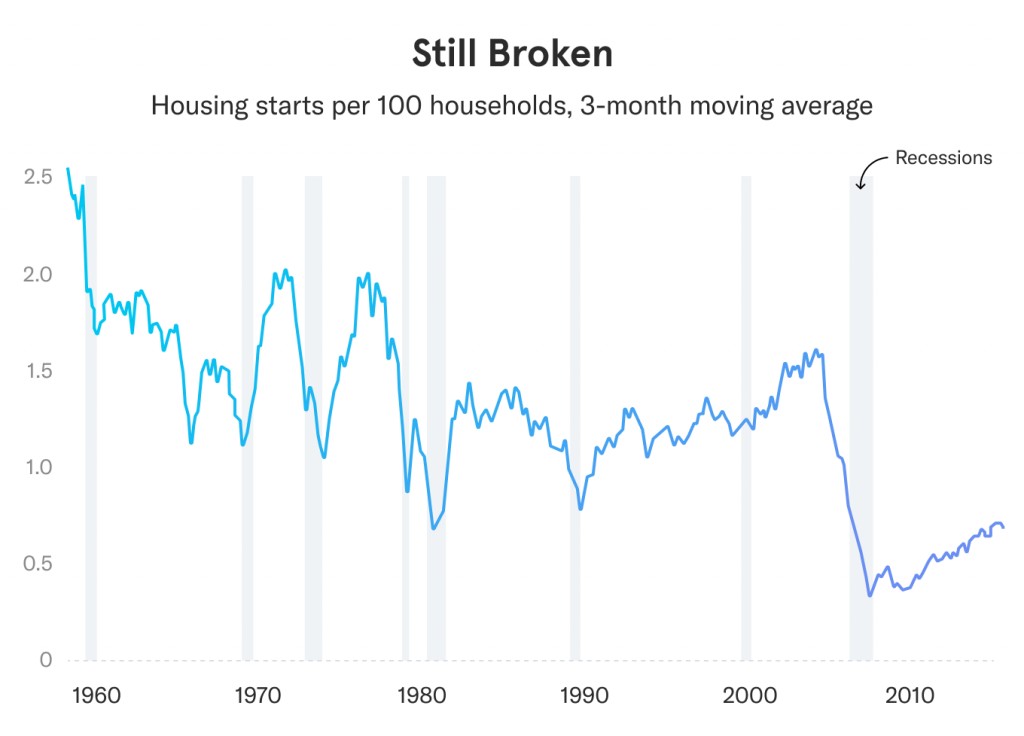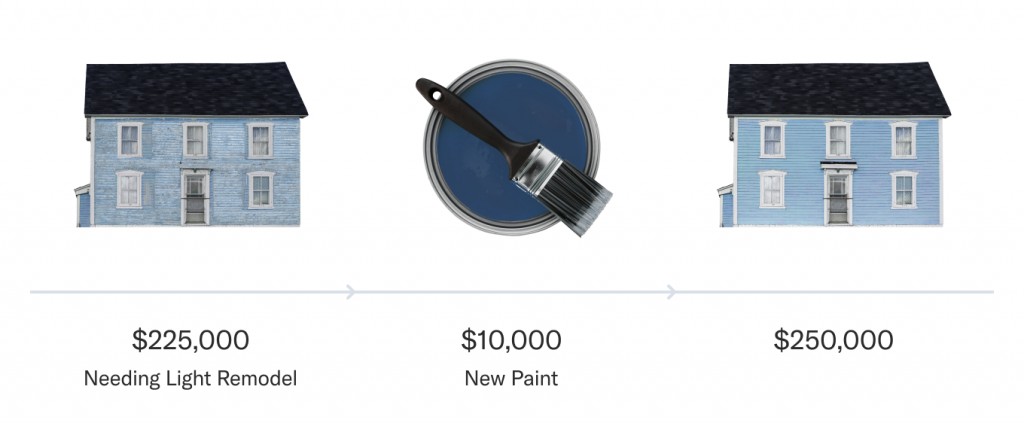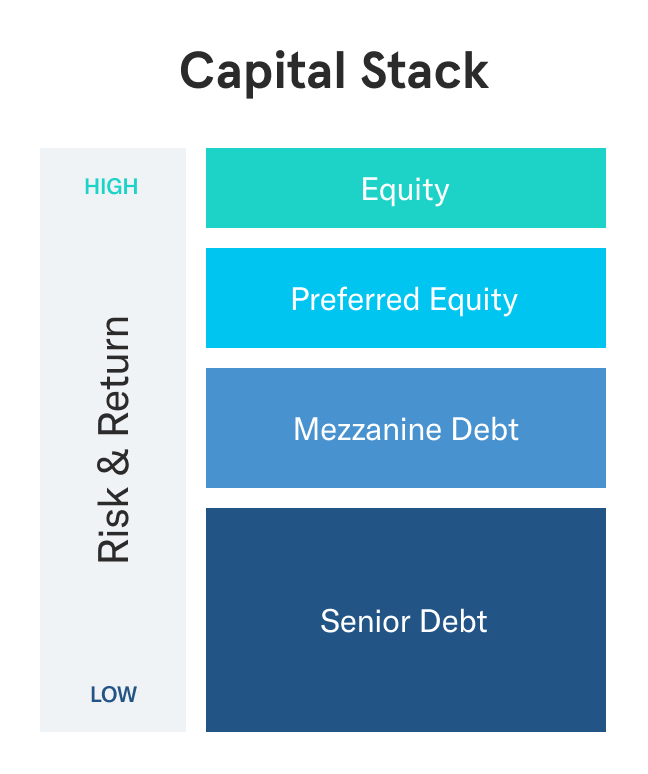Why arrived is focused on investing equity in single family rental properties that require light renovation
There are dozens of strategies to invest in real estate. You could invest in residential or commercial, with debt or equity, and be looking to flip a property or hold it long-term.
Arrived believes in a specific type of real estate investing: owning equity in single-family rental homes that need light improvements. This strategy offers consistent cash flow, and long-term appreciation while limiting downside risk. This strategy also offers significant tax benefits.
When you invest in real estate, the first thing to do is determine which type of real estate. The general categories of real estate are residential, commercial, industrial, and land. Each of these categories has more specific sub-categories.
After deciding what type of real estate to invest in, there’s different types of strategies. These could be new development, value-add (remodel), or turn-key.
Finally, there’s different ways to structure investments. Investors can use equity (ownership), preferred equity, mezzanine debt, or senior debt. Different investment types have different levels of security and expected return.
Together, there are dozens of real estate investing strategies. You could invest in:
Residential (Single-family Condos)
Residential (2-4 units)
Commercial (5+ unit apartments)
Commercial (Office)
Commercial (Hotels)
Commercial (Retail)
Industrial(Manufacturing)
Industrial(Warehouses)
Land Turn-Key
Remodel/Value-Add (to hold)
Remodel/Value-Add (to flip)
New Development
Equity
Preferred Equity
Mezzanine Debt
Senior Debt
Arrived believes in investing equity in residential (single family homes) properties that need light remodels. This combination offers potential for strong long-term gains with conservative risk.
Here’s a brief overview of why Arrived likes this strategy.
Single-Family Homes
Why Residential Real Estate?
Residential real estate generally includes housing units for 1-4 families. This is because it’s common for duplex or triplexes to be owner-occupied in 1 unit and rent the others out. Residential real estate also includes condos and townhomes.
Residential real estate has a few legs up on other property types. It’s easier to find deals and exit investments, and it generates strong cash flow with lower vacancy rates and turnover.
Larger and More Liquid Marketplace
Real estate is an illiquid investment. The process of selling real estate is complex and takes a long time.
Residential real estate is significantly easier to buy and sell than commercial, industrial, or land. That’s because there are way more potential buyers for residential real estate. The reason is obvious: homeowners might buy a residential unit, but they’re unlikely to buy a commercial property.
Selling larger commercial, industrial, and land investments is harder because the pool of buyers are much smaller. For residential real estate, you could sell to other investors or to a potential homeowner.
This larger market has an advantage on the acquisition side too. It’s easier to find deals in residential real estate because homeowners and investors value properties differently. This can make it easier to find homes that cash flow at strong rates.
Even though residential real estate is still illiquid, it’s significantly easier to sell and exit the investment than other types of real estate holdings. Residential real estate is the easiest and fastest type to complete transactions.
Strong Ability to Generate Income
As discussed in the previous article, one of the biggest benefits to real estate investing is that it generates cash for the owners while you hold it. The goal of a rental property is to maximize cash flow by having low vacancy rates and low turnover.

Residential real estate checks all of the boxes. It generates income, which is something that undeveloped land doesn’t do. And it has lower vacancy and lower turnover than multi-family residential, commercial, or industrial properties. Tenants in single-family rental properties stay for an average of 3 years, which is roughly double the typical stay of an apartment renter.1
Even in recessions, people need a place to live. Residential real estate doesn’t correlate with the business cycle in the same way that commercial properties like hotels or retail does. Residential real estate is considered to be safer.
Why Single-Family Properties?
Arrived believes that single-family homes are the most attractive type of residential property to invest in. Single-family rental homes are in strong demand, but there’s not enough supply. This leads to stronger appreciation than duplexes, condos, or townhomes.
Undersupply of Single-Family Homes
The United States housing supply is severely underbuilt. Freddie Mac estimates that the American housing market is undersupplied by 3.3 million units, and that the shortage is increasing by about 300,000 units a year2. We simply have not been able to build enough homes to fill the demand.
Despite this, we’ve been building fewer homes than almost any time in US history. This chart shows how little we’ve built over the last decade, despite the longest economic expansion of all time.

There are a number of factors contributing to why. Labor and materials costs have roughly doubled since the peak of the mid-2000’s housing boom. The National Association of Home Builders estimated that regulatory costs increased the cost of a new home by 30% from 2011 to 2016.3
Strong Demand and Appreciation
There’s more demand for single-family homes. This gives them a big advantage over condos, duplexes, and townhomes.
Per a Freddie Mac survey, 45% of renters want to move into a single-family home for their next rental. One driving factor is the size of renting an entire home vs an apartment. Over 65% of rental homes have at least 3 bedrooms, while only 11% of apartments do.4 That’s why Arrived requires properties to have at least 3 bedrooms.
Rental homes also benefit from higher appreciation rates. Condos have lower rates of appreciation because they are part of a shared building. Multi-family, commercial, and industrial have lower rates of appreciation too.
Why Light Remodels?
Once you’ve decided what kind of real estate to invest in, there’s different things you can do with it. Underused properties could be redeveloped into something new. Or you could do a serious remodel to improve an existing building.
New development and remodels can both be great ways to create value in a property. However, there’s also a lot of risk. There can be delays in permitting, unexpected costs, or issues with construction.
On the other side of the spectrum, there’s true “turn-key” rental property investing. This is buying a property that’s already in good shape and ready for a tenant. This kind of investment has lower risk but lower potential returns. It’s hard to buy these assets at a good price because the previous owner was already maximizing the cash flow of the property.
Arrived likes to take a Goldilocks approach. Arrived invests in properties that only need light remodel work before they’re ready for a tenant. This is the best of both worlds. We’re able to improve the home and capture additional value with certainty on the costs and timeline of the work.

Why Invest In Equity?

Equity is another term for ownership. You can invest in real estate by owning the property or lending money to someone who owns the property. Ownership has more control over the investment and generates higher returns.
To the right you can see the capital stack, which shows the relative risk and return for different type of investments. Equity owners are paid last, but don’t have their upside capped so their returns have the highest potential. Debt investors have lower downside risk but also have only moderate potential returns.
Long-Term Investing
There’s also power in long term thinking and investing. There are other ways to invest in real estate with a shorter time horizon. Arrived believes in long-term appreciation and investing for the future, not quick fix-and-flip investments.
Tangible Asset
The other major benefit of ownership is obvious – you own the property! Debt investors and preferred equity investors may have a Deed of Trust on the property to secure their interests, but owners actually own the property. This gives flexibility to change the plan if necessary, do whatever improvements they want, and gives control over when to sell.
Arrived’s Investing Strategy
Investors looking to get more exposure to real estate have a lot of options. They can invest with debt or equity, into different types of properties, with various strategies. There is no right way to do it. The desired amount of risk and return is different for every investor.
Arrived believes that single-family rental homes can provide strong returns after adjusting for the amount of risk. We can add value to properties we source by performing the right improvements, and we stick around for the long term. Ownership is powerful, and we want to help more people get access to the high upside that equity can provide. That’s why our focus is on helping people invest in the best single-family rental homes.
Sign up below to browse our rental properties that are open for investment. You can buy shares of top rental properties starting at $100 and start earning income quickly.
SIGN UP TODAY- https://www.marketwatch.com/story/the-new-housing-play-helping-priced-out-renters-become-long-distance-landlords-2018-07-30
- https://www.housingwire.com/articles/u-s-housing-market-is-missing-3-3-million-homes-freddie-mac-says/
- https://www.wsj.com/articles/american-housing-shortage-slams-the-door-on-buyers-1521395460
- https://www.realestateconsulting.com/dedicated-communities-single-family-rental-homes-part-multifamily-rental-portfolio/
The opinions expressed in this article are for general informational purposes only and are not intended to provide specific advice or recommendations for any individual or on any specific security or investment product. The views reflected in the commentary are subject to change at any time without notice. View Arrived’s disclaimers .
